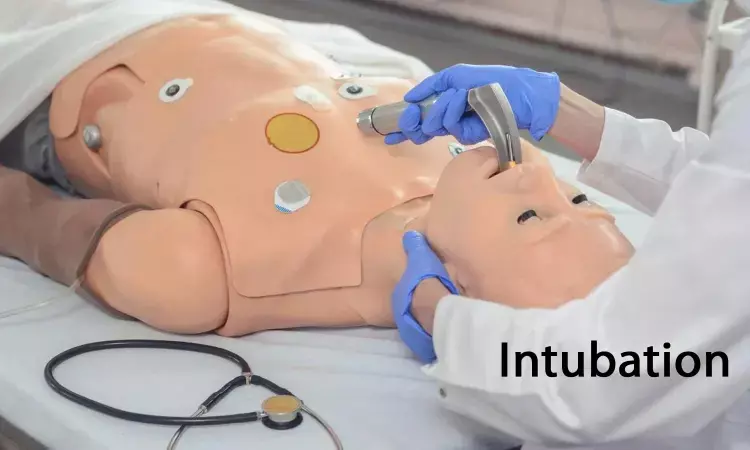- Home
- Medical news & Guidelines
- Anesthesiology
- Cardiology and CTVS
- Critical Care
- Dentistry
- Dermatology
- Diabetes and Endocrinology
- ENT
- Gastroenterology
- Medicine
- Nephrology
- Neurology
- Obstretics-Gynaecology
- Oncology
- Ophthalmology
- Orthopaedics
- Pediatrics-Neonatology
- Psychiatry
- Pulmonology
- Radiology
- Surgery
- Urology
- Laboratory Medicine
- Diet
- Nursing
- Paramedical
- Physiotherapy
- Health news
- Fact Check
- Bone Health Fact Check
- Brain Health Fact Check
- Cancer Related Fact Check
- Child Care Fact Check
- Dental and oral health fact check
- Diabetes and metabolic health fact check
- Diet and Nutrition Fact Check
- Eye and ENT Care Fact Check
- Fitness fact check
- Gut health fact check
- Heart health fact check
- Kidney health fact check
- Medical education fact check
- Men's health fact check
- Respiratory fact check
- Skin and hair care fact check
- Vaccine and Immunization fact check
- Women's health fact check
- AYUSH
- State News
- Andaman and Nicobar Islands
- Andhra Pradesh
- Arunachal Pradesh
- Assam
- Bihar
- Chandigarh
- Chattisgarh
- Dadra and Nagar Haveli
- Daman and Diu
- Delhi
- Goa
- Gujarat
- Haryana
- Himachal Pradesh
- Jammu & Kashmir
- Jharkhand
- Karnataka
- Kerala
- Ladakh
- Lakshadweep
- Madhya Pradesh
- Maharashtra
- Manipur
- Meghalaya
- Mizoram
- Nagaland
- Odisha
- Puducherry
- Punjab
- Rajasthan
- Sikkim
- Tamil Nadu
- Telangana
- Tripura
- Uttar Pradesh
- Uttrakhand
- West Bengal
- Medical Education
- Industry
Preoperative Airway assessment practices in COVID-19 pandemic- SAFE PAC Survey

For the safe practice of anesthesia, the anesthesiologist must examine the mouth cavity, nose, jaws, and neck from the front and sides of the patient before to administering anesthesia. The sensitivity and specificity of airway evaluation tests range between 24 and 51% and 87 and 93%, respectively. The test with the greatest sensitivity was the modified Mallampati test, which involves complete mouth openness with the examiner's eyes at the level of the oral cavity. During this pandemic, the process of assessing the airway exposes the examiner to the possibility of infection from asymptomatic individuals. A patient experiencing an adverse airway event owing to the avoidance of pre-anesthetic airway evaluation constitutes a breach of duty of care. Comparing the present practice of pre anesthetic airway evaluation during the pandemic to the pre-pandemic era, a survey was done recently. An email questionnaire survey of practicing anesthesiologists is the most secure and appropriate technique of research during this epidemic. We may be able to establish a framework for best practice during this pandemic based on the findings of the survey, which may have a significant impact on current procedures.
A survey was done utilizing a questionnaire including 35 pre-validated items. The questionnaire was sent through Google Forms to 4,676 members of the Indian Society of Anaesthesiologists (ISA). 470 email messages sent to 4676 members were returned as undelivered. The response percentage for the remaining 4206 questionnaire recipients was 10.8 percent, with 456 replies received. Using EZR software, percentage, mean, and standard deviation were determined. During the pandemic, the rate of pre-anesthetic airway screening declined by 31.7%, resulting in 5.2% of individuals experiencing unexpectedly difficult airways. Eight percent of the respondents were afflicted.
This is the first study to demonstrate that a drop in preoperative airway evaluation during the pandemic has resulted in a significant decline in the safety of airway management for patients scheduled for elective surgery. During the pandemic, there was a statistically significant decrease in pre-anesthetic airway examination, leading to adverse airway events. Case-by-case evaluation of the risk of contamination aids in the selection of suitable PPE, hence lowering the danger of transmission. In the evolution of virtual pre-anesthetic airway examination, innovative approaches play a critical role. Eight percent of responders tested positive for COVID-19. During the pandemic, a methodology for safe pre-anesthetic airway evaluation is proposed.
Reference –
Girijanandan, Menon D.; Manjit, George,; Sunitha, Zachariah K.; Lintu, George; Linby, Chacko; Sruthy, Victor Study on airway assessment practices for elective procedures during pre-anesthetic evaluation in COVID-19 pandemic- A national online survey (SAFE PAC Survey), Journal of Anaesthesiology Clinical Pharmacology: Volume 38 - Issue Suppl 1 - p S79-S88
doi: 10.4103/joacp.joacp_138_21
MBBS, MD (Anaesthesiology), FNB (Cardiac Anaesthesiology)
Dr Monish Raut is a practicing Cardiac Anesthesiologist. He completed his MBBS at Government Medical College, Nagpur, and pursued his MD in Anesthesiology at BJ Medical College, Pune. Further specializing in Cardiac Anesthesiology, Dr Raut earned his FNB in Cardiac Anesthesiology from Sir Ganga Ram Hospital, Delhi.
Dr Kamal Kant Kohli-MBBS, DTCD- a chest specialist with more than 30 years of practice and a flair for writing clinical articles, Dr Kamal Kant Kohli joined Medical Dialogues as a Chief Editor of Medical News. Besides writing articles, as an editor, he proofreads and verifies all the medical content published on Medical Dialogues including those coming from journals, studies,medical conferences,guidelines etc. Email: drkohli@medicaldialogues.in. Contact no. 011-43720751


